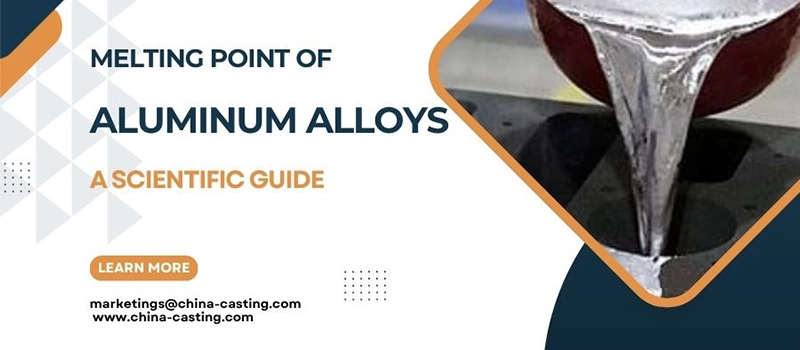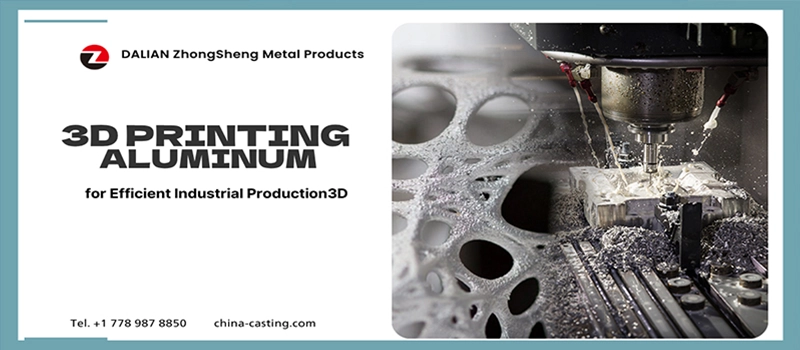Have you ever wondered why titanium is often called a “heat-proof metal”?
When engineers talk about aerospace materials or high-temperature alloys, the melting point of titanium always becomes a key topic. But what exactly is the melting point of titanium? Is it 1,000°C, 1,500°C, or higher? And how does it compare to stainless steel or aluminum under extreme heat?
Choosing the wrong metal for high-temperature environments can lead to serious consequences — warping, structural failure, or even equipment breakdown. In industries like aviation, petrochemical, and automotive manufacturing, a few degrees of temperature difference can determine whether a component survives or melts. Without understanding the melting point of titanium metal, even experienced engineers may face costly material mistakes.
Titanium has an exceptionally high melting point of about 1,668°C (3,034°F), which makes it one of the most heat-resistant structural metals available today.
In this article, I’ll explain in depth not only the melting point of titanium, but also its boiling point, melting point variations in alloys, and how it compares with other metals like stainless steel and titanium compounds. By the end, you’ll understand exactly why titanium stands strong where other metals fail.
The Melting Point of Titanium in Celsius, Fahrenheit, and Kelvin
The melting point of titanium is 1,668 degrees Celsius, which is equal to 3,034 degrees Fahrenheit or 1,941 Kelvin. This exceptionally high temperature is what makes titanium one of the most heat-resistant metals in the world.
Whether you’re using metric or imperial systems, understanding the correct melting point is essential for high-temperature applications. Engineers in Europe and Asia typically work in Celsius, while North American manufacturers rely on Fahrenheit. Scientific labs and academic institutions often reference the Kelvin scale for thermodynamic precision.
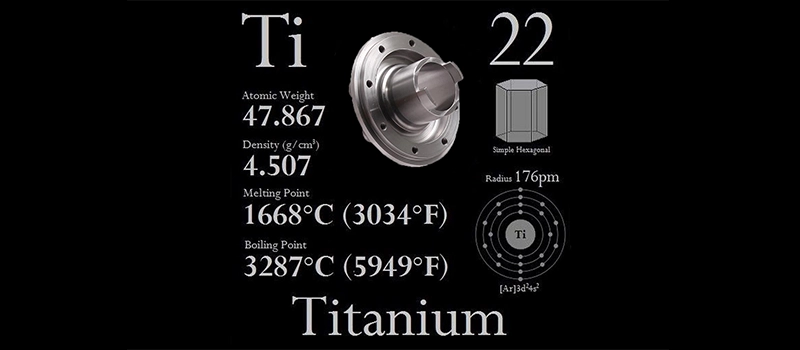
Choosing the right temperature unit is more than a formality—it directly impacts equipment design, thermal simulation, and casting setup. For instance, in titanium precision casting, molds must be built to tolerate temperatures just above the metal’s melt point without degrading or reacting. A few degrees of miscalculation could result in product failure or serious quality issues.
When referencing datasheets or material certifications, always check how the melting point is presented. Errors in Celsius-to-Fahrenheit conversion or mislabeling in Kelvin can cause misunderstandings between engineering teams, especially in international projects. For example:
- 1,668°C = 3,034°F
- 1,668°C = 1,941 K
Accurate temperature data ensures your titanium components perform reliably even under extreme thermal stress—especially in aerospace, medical, and energy applications.
Why Does Titanium Have a High Melting Point?
Titanium’s extremely high melting point of 1,668°C (3,034°F) is no accident. It’s the result of its atomic structure, bonding energy, and electron configuration—all of which contribute to titanium’s exceptional thermal stability. For engineers, metallurgists, and designers, understanding the why behind this high melting point offers valuable insight into how titanium behaves in extreme environments.
Atomic Structure and Bonding Energy
Titanium is a transition metal located in Group 4 of the periodic table. Its atoms are arranged in a hexagonal close-packed (HCP) structure at room temperature, which transforms into a body-centered cubic (BCC) structure at high temperatures.
This dual-phase behavior gives titanium a strong and tightly bound crystal lattice, which requires significant energy to break apart—hence the high melting point.
The metallic bonds between titanium atoms are particularly strong. These bonds consist of delocalized electrons that move freely among positively charged metal ions, forming a cohesive structure. The energy required to overcome these bonds and shift the atoms into a liquid state is substantially higher than that of weaker metals like aluminum or zinc.
Electron Configuration and D-Orbital Stability
Another reason for titanium’s thermal resilience lies in its electron configuration:
[Ar]3d24s2\text{[Ar]} 3d^2 4s^2[Ar]3d24s2
These electrons fill the d-orbitals in a way that creates stable bonding and low reactivity. The presence of two electrons in the 3d orbital contributes to:
- High melting energy
- Good corrosion resistance
- Low electrical conductivity
This structure resists excitation under heat, which means it maintains physical integrity even at very high temperatures.
Low Atomic Diffusivity
Compared to softer metals, titanium atoms move very slowly through the lattice at elevated temperatures. This property, known as low atomic diffusivity, reduces the rate of creep and deformation in high-heat environments. Even when exposed to temperatures close to its melting point, titanium maintains its shape and load-bearing strength.
Resistance to Thermal Expansion and Oxidation
Materials with high melting points often expand under heat, but titanium is unique. It has a relatively low thermal expansion coefficient. This means dimensional stability is maintained during temperature fluctuations—ideal for tight tolerances in aerospace or precision tools.
Additionally, titanium forms a stable oxide layer (TiO₂) on its surface at high temperatures. This layer acts as a protective barrier, preventing further oxidation and thermal degradation, especially in high-pressure environments like jet turbines or deep-sea valves.
Boiling Point of Titanium: How Hot is Too Hot?
While the melting point of titanium is widely known and often referenced in engineering, the boiling point of titanium is an equally important factor—especially when titanium is exposed to extreme thermal or plasma environments. Understanding both the melting and boiling point of titanium is essential for selecting it in ultra-high-temperature applications, such as aerospace propulsion systems, vacuum chambers, or plasma reactors.

What Is the Boiling Point of Titanium?
Titanium has a boiling point of approximately 3,287°C (5,949°F).
This means titanium remains in a liquid state between its melting point (1,668°C) and boiling point (3,287°C)—a range of over 1,600°C where the metal is fully molten but still chemically stable.
Such a wide liquid range makes titanium suitable for high-temperature casting, additive manufacturing (3D printing), and vacuum metallurgy. It ensures that the material can be processed under heat without risk of vaporization—something many metals can’t handle at this scale.
Why Boiling Point Matters After the Melting Point of Titanium
The melting point of titanium defines the onset of liquefaction, but in industrial scenarios like electron beam melting (EBM) or laser sintering, temperatures often exceed the melt point significantly. If you’re designing components that operate near plasma arcs, induction furnaces, or re-entry heat shields, knowing the boiling point of titanium becomes crucial.
For example:
- In rocket nozzles, the titanium surface may reach above 2,000°C
- In spacecraft shielding, transient plasma heat can exceed 2,500°C
- In reactive metal processing, vaporization temperature must be controlled
In all these cases, engineers must understand the complete thermal envelope from the melting point of titanium up to its boiling limit to ensure thermal integrity.
Titanium’s Stability in Liquid and Vapor States
Even as titanium approaches its boiling point, it maintains a strong oxide layer, offering short-term resistance to oxidation. However, above 2,000°C, it becomes highly reactive with oxygen, nitrogen, and even mold materials unless protected by vacuum or inert gas. That’s why titanium casting and melting are often done in argon atmospheres or high-grade vacuum chambers.
So, while the melt point of titanium makes it versatile, the boiling point of titanium determines how far we can push its performance envelope.
Titanium vs. Other Metals: How It Stands Out
The melting point of titanium—at 1,668°C (3,034°F)—is significantly higher than many commonly used metals. In high-temperature industrial environments, this property is one of titanium’s greatest strengths. When engineers are selecting materials for applications like jet engines, reactors, or heat exchangers, titanium often wins out due to its superior thermal tolerance.
Let’s look at how the melting point of titanium compares to other mainstream metals.
Titanium vs. Aluminum
Aluminum is lightweight and cost-effective, but its melting point is only 660°C (1,220°F). This means it can’t withstand even moderate industrial heat levels.
By contrast, the titanium melting point is more than 1,000°C higher, making it suitable for aerospace, thermal shielding, and high-stress environments where aluminum would fail instantly.
Need Help? We’re Here for You!
Titanium vs. Stainless Steel
Stainless steel typically melts between 1,400°C and 1,530°C (2,552°F–2,786°F) depending on its composition. While that’s relatively high, it’s still lower than the melting point of titanium metal, which offers better performance at elevated temperatures.
This difference matters in:
- Thermal fatigue environments
- Fire-resistant structural elements
- Systems with sustained heat exposure
When strength at temperature matters, titanium’s higher melting point provides a wider safety margin.
Titanium vs. Nickel
Pure nickel melts at 1,455°C (2,651°F). It’s known for good heat resistance, but again, titanium offers a higher melt point. That additional tolerance makes titanium better suited for certain advanced applications, particularly where lighter weight and higher thermal limits are desired.
It’s important to note: nickel becomes increasingly unstable in oxidizing environments above 1,400°C, while titanium’s oxide layer remains protective until much higher thresholds.
Melting Point of Titanium Alloy: Does It Vary?
Yes, it does. While the melting point of titanium in its pure form is consistently 1,668°C (3,034°F), once alloying elements are introduced—such as aluminum, vanadium, molybdenum, iron, or tin—the melting point can and does vary depending on the alloy composition.
Understanding these variations is critical for anyone working with titanium alloys in casting, machining, welding, or high-temperature design. The wrong assumption about an alloy’s melt point could lead to catastrophic material failure in heat-exposed components.
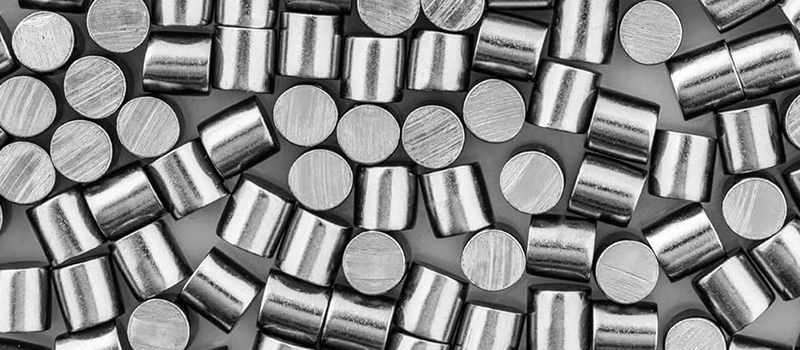
Why Do Titanium Alloys Have Different Melting Points?
Alloying changes the atomic arrangement of the metal. When you introduce elements like aluminum (which has a lower melting point) or vanadium, you’re adjusting the thermal behavior and bonding strength of the titanium matrix.
This can result in:
- Lower or slightly higher melting ranges
- A broader melting range rather than a single-point value
- Modified performance under thermal cycling
Unlike pure titanium, titanium alloys do not have a sharp melting point. Instead, they exhibit a melting range—a span between the solidus and liquidus temperatures.
Common Titanium Alloys and Their Melting Points
Below are examples of widely used titanium alloys and how their melting points differ from pure titanium:
| Alloy | Composition Highlights | Melting Range (°C) | Melting Range (°F) |
|---|---|---|---|
| Ti-6Al-4V | 6% Al, 4% V | 1,600–1,650°C | 2,912–3,002°F |
| Ti-6Al-2Sn-4Zr-2Mo (Ti-6242) | High-strength, creep-resistant | 1,635–1,665°C | 2,975–3,029°F |
| Ti Grade 2 | Commercially pure titanium | ~1,668°C | ~3,034°F |
| Ti Grade 5 | Ti-6Al-4V (most used) | 1,600–1,650°C | 2,912–3,002°F |
| Ti-3Al-2.5V | Aerospace-grade tubing alloy | 1,625–1,665°C | 2,957–3,029°F |
As you can see, most titanium alloys melt slightly below pure titanium’s standard melting point due to the effect of alloying elements. This must be accounted for in any heat-based process, especially in:
- Vacuum casting
- Electron beam melting (EBM)
- Welding operations
- Additive manufacturing
Why This Matters for Engineers and Procurement
If your application involves thermal exposure, or if you’re specifying a titanium alloy for a project, you must not assume it shares the same melting point as pure titanium. Always consult the alloy’s technical data sheet or material certification before choosing melting parameters.
Mistaking a titanium alloy for pure titanium in casting, forging, or CNC machining near thermal limits can:
- Damage tools
- Cause incomplete melts or overburning
- Lead to microstructural defects
- Compromise product integrity
That’s why understanding the melting point of titanium alloys is just as important as knowing the melting point of titanium metal itself.
Titanium Compounds: Melting Points of Titanium Carbide, Nitride & Dioxide
When we talk about the melting point of titanium, it’s important to understand that titanium doesn’t only exist in pure or alloyed metallic form. In industrial applications, titanium is often used in compound forms, such as titanium carbide (TiC), titanium nitride (TiN), and titanium dioxide (TiO₂). Each of these compounds serves unique functions—ranging from hard coatings to pigments and high-performance ceramics—and they each have distinct melting points that differ significantly from pure titanium metal.
Melting Point of Titanium Carbide (TiC)
Titanium carbide is known for its extreme hardness, thermal conductivity, and high resistance to wear, which makes it ideal for cutting tools, armor plating, and high-temperature applications.
- Melting point: 3,160°C (5,720°F)
This is nearly twice the melting point of titanium metal, which highlights how titanium, when bonded with carbon, forms an ultra-high-temperature ceramic. It’s commonly used in tungsten-free cutting tools and metal matrix composites for aerospace.
Despite its hardness, titanium carbide maintains good thermal shock resistance. This allows it to withstand rapid temperature changes—something even pure titanium would struggle with near its melt point.
Melting Point of Titanium Nitride (TiN)
Titanium nitride is a gold-colored coating widely used in aerospace components, medical instruments, and decorative finishes. While it shares titanium’s corrosion resistance, it far exceeds it in hardness.
- Melting point: 2,940°C (5,324°F)
Though slightly lower than titanium carbide, TiN still melts at a significantly higher temperature than pure titanium. This makes it an excellent choice for surface protection in applications where materials are exposed to friction and heat.
The melting point of titanium nitride also ensures that the coating remains intact during high-speed machining or thermal cycling processes.
Melting Point of Titanium Dioxide (TiO₂)
Titanium dioxide is best known as a white pigment and UV-blocking material in everything from paints to cosmetics and sunscreens. But in ceramic engineering and thermal coatings, TiO₂ is also valued for its thermal stability.
- Melting point: 1,843°C (3,349°F)
Interestingly, titanium dioxide’s melting point is slightly higher than the melting point of titanium metal itself. This makes it useful for high-temperature ceramics, electronic components, and oxygen-barrier layers in coatings.
Why Melting Points of Titanium Compounds Matter
Understanding the melting point of titanium in all its forms—not just the metal—is essential for selecting materials in tooling, aerospace, chemical processing, and surface engineering. Here’s why:
- Material selection: Choose TiC or TiN when you need wear resistance at temperatures where titanium would melt.
- Coating durability: Know the melt point of compounds to ensure they hold up during friction or heating.
- Thermal compatibility: In multi-material assemblies, mismatched melting points can cause failure.
In all of these contexts, the melting point of titanium, and the melting and boiling point of titanium-based compounds, play a vital role in design success.
Industrial Applications of Titanium’s High Melting Point
The melting point of titanium, at 1,668°C (3,034°F), plays a pivotal role in determining where and how titanium is used in modern industry. It is not just a thermal characteristic on a datasheet—it’s a decisive property that unlocks performance in high-temperature, high-pressure, and chemically aggressive environments.
Thanks to this extreme heat resistance, titanium has found a secure place in sectors that demand reliability under fire—literally.

Aerospace and Aviation
No industry showcases the value of the melting point of titanium more than aerospace. Jet engines, exhaust systems, and afterburners operate at temperatures that push most metals to their limits.
- Turbine blades made of titanium alloys can endure constant exposure to 600–900°C without creep or fatigue.
- The safety margin provided by the high titanium melting point ensures parts won’t deform in critical phases like takeoff or re-entry.
- Titanium’s low weight (45% lighter than steel) adds to its appeal in flight-critical structures.
In rocket propulsion, titanium components are used near combustion chambers where temperatures can exceed 1,500°C—dangerously close to the melt point of titanium, but still within its safety range.
Petrochemical and Chemical Processing
In environments involving corrosive fluids and extreme temperatures, the combination of corrosion resistance and a high melting point makes titanium invaluable.
- Titanium heat exchangers can withstand boiling acids and chlorides while retaining structural strength at elevated temperatures.
- Reactors lined with titanium resist both chemical attack and thermal deformation, something stainless steel often fails to do above 500°C.
In these industries, a misunderstanding of the melting point of titanium metal could lead to severe corrosion failures or thermal breakdowns. This is why titanium is often specified in chemical plants despite its higher initial cost.
Power Generation and Nuclear Industry
In nuclear power stations, titanium is used in cooling systems and piping exposed to high radiation and heat. Its melting point ensures dimensional stability even under fluctuating thermal loads.
- In geothermal plants, titanium is used in steam-handling systems where both high pressure and high temperature are common.
- For advanced reactors, titanium’s resistance to neutron absorption and its thermal endurance make it a material of the future.
Again, the titanium melting point directly enables safe and long-term operation under extreme stress.
Need Help? We’re Here for You!
Military and Defense
In defense applications, particularly armor plating and hypersonic vehicles, titanium is chosen for its ability to resist melting, cracking, or warping under extreme aerodynamic heating.
Missile skins and heat shields benefit from the high melting point of titanium, ensuring structural integrity during high-speed atmospheric flight. This allows for better thermal protection, reduced weight, and longer service life.
Medical and Biomedical Devices
While medical implants don’t often reach high temperatures, the melting point of titanium becomes important during manufacturing and sterilization.
- Autoclaves operate at over 130°C under pressure—titanium components easily tolerate repeated cycles.
- Surgical tools made from titanium can be flame-sterilized without risk of softening or degradation.
In 3D printing of custom implants, titanium powders are sintered at temperatures near the melting point, demanding exact control of thermal behavior.
How Melting Point Affects Machining and Casting of Titanium
The melting point of titanium, at 1,668°C (3,034°F), is both a strength and a challenge. While it gives titanium its well-known thermal resilience, it also creates complexity in manufacturing, especially during casting, welding, forging, and machining.
Understanding how the titanium melting point affects these processes is essential for achieving precision, material stability, and product quality in metalworking.
Casting Titanium: A High-Temperature Precision Challenge
Unlike materials like aluminum or zinc, titanium’s high melting point requires specialized equipment for melting and pouring. Conventional steel molds or open-atmosphere furnaces can’t handle the melt point of titanium without degradation or chemical contamination.
Key considerations for titanium casting:
- Vacuum or inert atmosphere (argon) is required to prevent oxidation at temperatures approaching or exceeding the melting point of titanium metal.
- Graphite molds or ceramic shells with protective coatings are used to withstand thermal shock and avoid unwanted chemical reactions.
- Pouring temperatures must be carefully controlled—typically between 1,700°C–1,800°C—to maintain fluidity without risking vaporization or micro-defects.
This means titanium casting is significantly more expensive and sensitive than that of lower-melting-point metals, but the result is a dimensionally stable, high-performance component.
Machining Titanium: Heat Is the Enemy
Even though most machining operations occur well below the melting point of titanium, that high melt point still affects the process—because titanium is a poor thermal conductor.
What does this mean in practice?
- Heat concentrates at the cutting zone, causing rapid tool wear.
- Traditional machining tools lose hardness long before the titanium melting point is reached, resulting in reduced life and surface quality.
- Coolant selection and application are critical, especially in dry or near-dry cutting scenarios.
In this case, the melting point of titanium defines the thermal ceiling, but localized temperatures can spike in small cutting areas. This demands:
- Carbide or ceramic tooling
- Low-speed, high-feed machining parameters
- Flood coolant systems or cryogenic cooling
Inadequate heat control doesn’t melt the titanium—but it can melt the tool or ruin the surface finish.
Welding and Additive Manufacturing
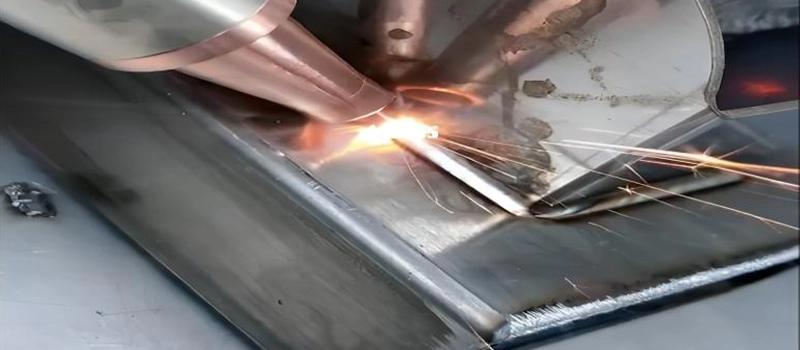
Welding titanium also brings the melting point of titanium into sharp focus. At temperatures close to 1,668°C, titanium reacts with oxygen, nitrogen, and hydrogen in the air. This leads to:
- Brittleness
- Porosity
- Structural failure
To prevent this, welding must be done in:
- Inert gas chambers (argon)
- Vacuum weld environments
- Using trailing shields to protect the heat-affected zone (HAZ)
In additive manufacturing (especially laser powder bed fusion), understanding the exact melt point of titanium is essential for setting scan speed, laser power, and layer thickness. A few degrees too hot, and you risk balling, evaporation, or incomplete fusion.
Forging and Heat Treatment
In forging, titanium is typically shaped at 700–950°C, which is far below the melting point of titanium, but still hot enough to reduce yield stress. However, if forging tools or dies can’t tolerate the heat buildup, the process may cause material tearing or die failure.
In heat treatment, post-machining stress relief or aging must also respect the proximity to the melt point. Overheating leads to grain growth, alpha-case formation, and loss of mechanical integrity.
Conclusion
The melting point of titanium, at 1,668°C (3,034°F), is the foundation of its value in high-performance industries. From aerospace to petrochemical and medical applications, titanium’s ability to withstand extreme heat defines how it’s processed, where it’s used, and why it’s trusted. Whether in pure form, alloyed, or as a compound, understanding its thermal behavior is essential for safe, efficient, and long-lasting engineering.




